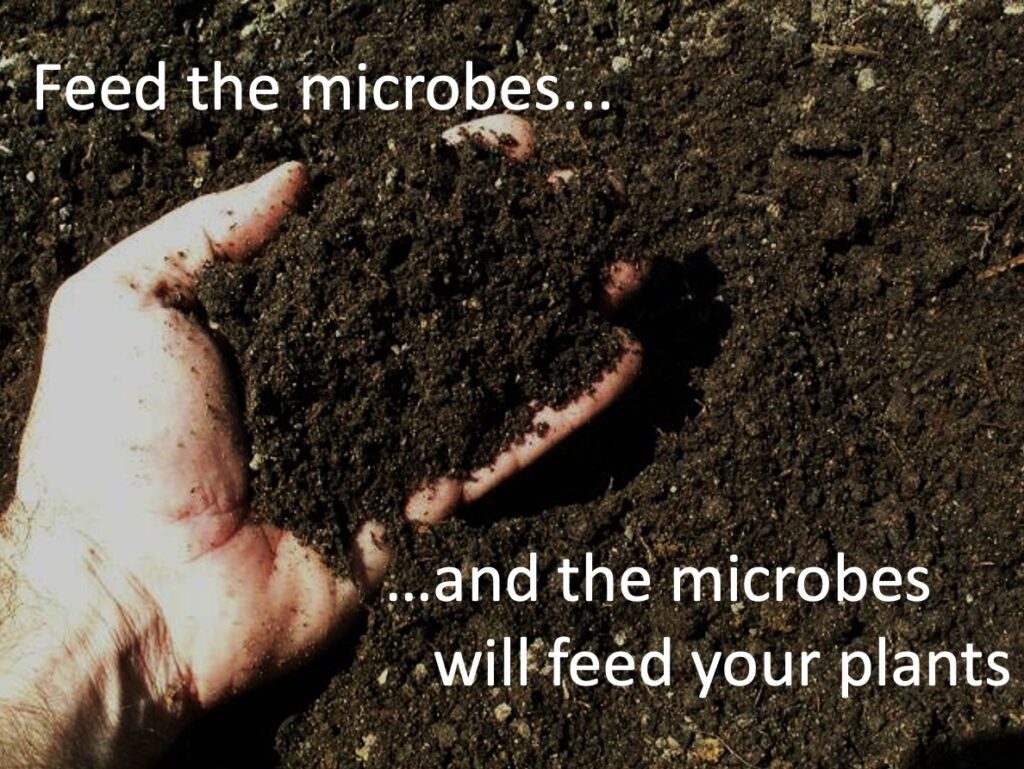Improving Soil with Compost
By Peggy d’Hemecourt
Advanced Master Gardener: Earth-Kind®
[caption id="attachment_392746" align="aligncenter" width="1024"] Screenshot[/caption]
It’s May and gardeners' thoughts turn to their planting beds. They are drawn to nurseries and can’t resist adding a few more plants; the seasonal annuals colors are irresistible. Their attention is focused on plants.
But what about the soil in which they plant? Soil conditions greatly affect plant performance. The soil not only anchors plants but also stores water, air, and nutrients that plants need. And soil should be home to life – microbes that play an important role in breaking down organic matter into the nutrients that plants need.
One of the best ways to improve the soil is to incorporate fully finished compost. Compost is nature’s slow-release fertilizer. Since it is the result of the decay of once living organisms and their by-products, it contains most of the nutrients that plants need. Compost enhances the number and diversity of soil microbe populations. In clay soils compost improves drainage. In sandy soils it increases the soil’s ability to retain water. And soil amended with compost enables plants to expand their root systems.
If you're building new planting beds, incorporate three inches of fully finished compost into the top six inches of soil. In established beds, use two to three inches of compost as you would a mulch around plants and bare soil. In containers, mix one part finely screened compost with two parts commercial potting media.
Fertile soil is the key to gardening success. In the natural world, compost happens – think “forest floor”. In our landscapes, nature needs our help to achieve soil enriched with organic matter. Amending soil with compost is an Earth-Kind® practice that can reduce our reliance on chemical fertilizers and help us conserve water. For more information about Earth-Kind® Landscaping, visit https://aggie-horticulture.tamu.edu/earthkind/
Screenshot[/caption]
It’s May and gardeners' thoughts turn to their planting beds. They are drawn to nurseries and can’t resist adding a few more plants; the seasonal annuals colors are irresistible. Their attention is focused on plants.
But what about the soil in which they plant? Soil conditions greatly affect plant performance. The soil not only anchors plants but also stores water, air, and nutrients that plants need. And soil should be home to life – microbes that play an important role in breaking down organic matter into the nutrients that plants need.
One of the best ways to improve the soil is to incorporate fully finished compost. Compost is nature’s slow-release fertilizer. Since it is the result of the decay of once living organisms and their by-products, it contains most of the nutrients that plants need. Compost enhances the number and diversity of soil microbe populations. In clay soils compost improves drainage. In sandy soils it increases the soil’s ability to retain water. And soil amended with compost enables plants to expand their root systems.
If you're building new planting beds, incorporate three inches of fully finished compost into the top six inches of soil. In established beds, use two to three inches of compost as you would a mulch around plants and bare soil. In containers, mix one part finely screened compost with two parts commercial potting media.
Fertile soil is the key to gardening success. In the natural world, compost happens – think “forest floor”. In our landscapes, nature needs our help to achieve soil enriched with organic matter. Amending soil with compost is an Earth-Kind® practice that can reduce our reliance on chemical fertilizers and help us conserve water. For more information about Earth-Kind® Landscaping, visit https://aggie-horticulture.tamu.edu/earthkind/
Share this Entry
Business directory
Our Community Partners